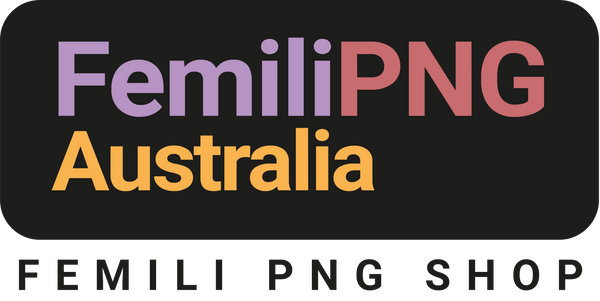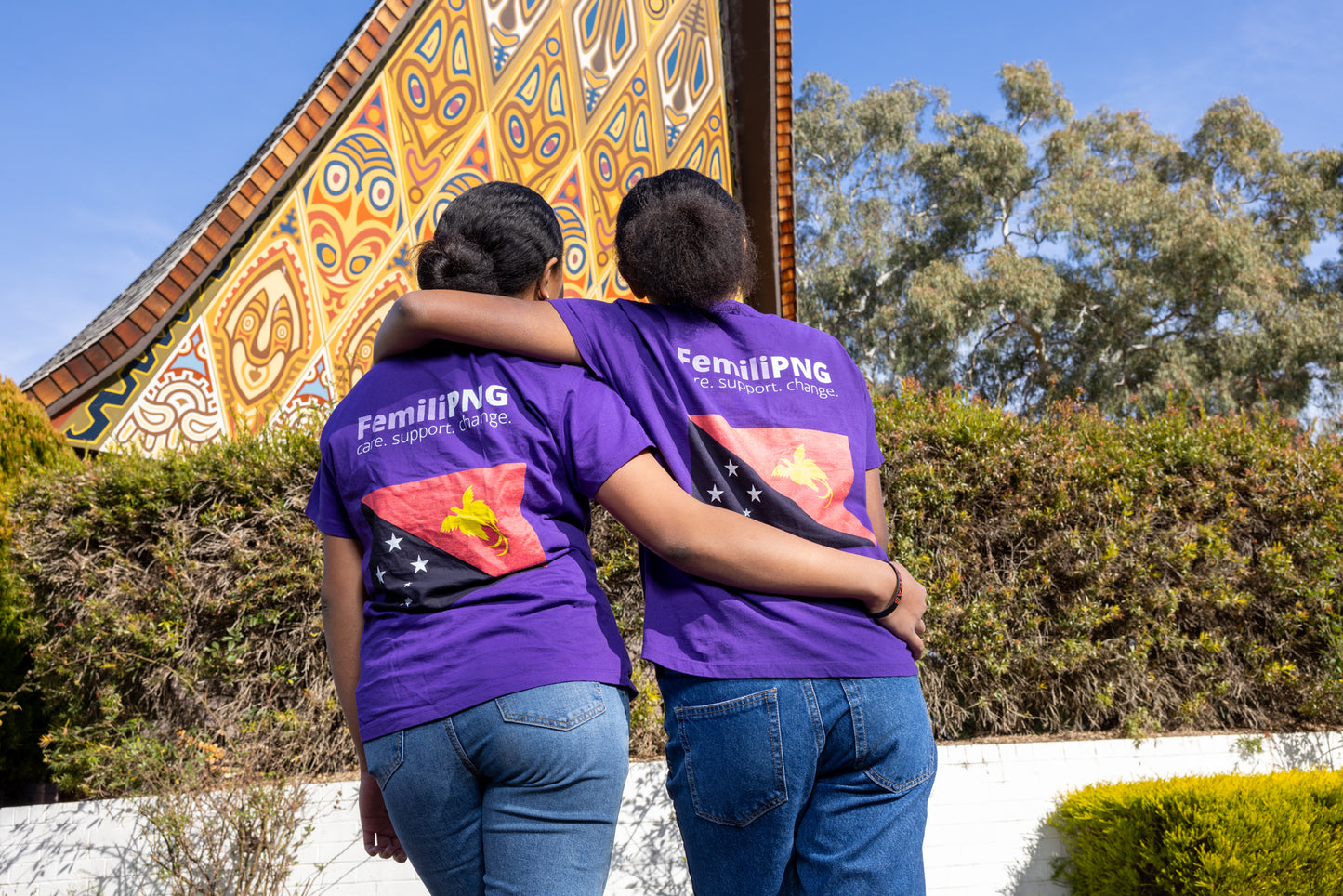
The Meaning Behind Bilum Designs
Share
Each bilum tells a story through its design, reflecting the life experiences of the weaver, their community, and cultural heritage. Here’s a closer look at some of the unique bilum designs we offer and the meanings they hold.
Baby Bilums
The word "bilum" in Tok Pisin means "womb". It symbolises the beginning of life, and many mothers use their bilums to carry and protect their babies. The baby bilum is typically woven out of a soft material into a large, circular shape. The handles are usually left open and tied together with a knot, so the mother can adjust the length of the handles depending on the weight of the baby. Today, baby bilums are also used to carry various other heavy loads (e.g., fruit and vegetables).

Skin Pik Design
The Skin Pik design embodies strength and resilience, reflecting the struggles faced by many financially and socially disadvantaged women in PNG. In village celebrations, these women often receive the least desirable parts of the mumu (a traditional pork dish), such as small fatty squares of pig skin (known as 'Skin Pik'). The Skin Pik bilum reclaims this symbol, turning it into a powerful reminder of the resilience women have shown in the face of gender and social inequality. These bilums are traditionally woven by women in Goroka.

Fish Bone Design
Inspired by the skeletal structure of fish, this design often signifies sustenance and the importance of the sea and rivers in daily life. Fish is a staple in the diet of many communities, and this design is a nod to the role that fishing plays in sustaining families.

Diamond Design
The diamond design is a powerful symbol of abundance and prosperity in PNG culture. Traditionally, these bilums are gifted to a newly married woman by her mother, signifying good fortune and well-being. They are also often given on anniversaries or special occasions. Diamond bilums are predominantly woven by women in Goroka, showcasing regional craftsmanship.

Mat Design
The mat design is inspired by the woven mats used in everyday PNG life, symbolising comfort and communal space. It represents the coming together of people, much like a mat brings a family or community together in shared spaces.

Kundu Design
The Kundu bilum features the hourglass shape of the Kundu drum, a traditional handheld drum used in ceremonies throughout PNG. The drum’s sound is considered the voice of the ancestors, making it an integral part of the country’s cultural identity. The Kundu design in bilums celebrates this national symbol and the cultural significance of the drum in connecting the past with the present.

Striped Design
Stripes are one of the simplest yet most popular bilum designs, often signifying unity and the coming together of different paths. The lines can represent rivers, roads, or life’s journey, illustrating how every individual path is part of a greater whole.

Mountain Design
Reflecting the majestic landscapes of PNG, the mountain design symbolises strength, stability, and endurance. It connects the weaver and the carrier of the bilum to the natural environment, celebrating the enduring presence of the land in daily life.

Zig Zag Design
The zig zag design symbolises the ups and downs of life, representing resilience and adaptability. It reflects the challenges and triumphs individuals face, emphasizing strength and the ability to move forward despite obstacles. The pattern also highlights the interconnectedness of different paths, celebrating the diversity of experiences within the community.

Every bilum sold by FemiliPNG Australia supports Femili PNG’s efforts to provide life-changing assistance to survivors of violence. By purchasing a bilum, you are not only acquiring a piece of PNG’s cultural heritage but also contributing to a brighter, safer future for survivors of family and sexual violence.
Explore our collection of bilums and find one that resonates with you, knowing that every purchase makes a difference.


